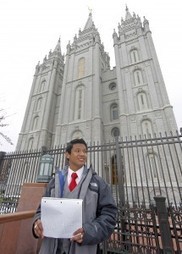Memorial service held in town in state of Wisconsin for six Sikhs gunned down on Sunday.
The clean-up, memorial service and grieving was marked by people of all religions and ethnicities come together. This is an excellent video and I especially enjoyed President Obama's statements of the political rights and freedoms that should be consider universal human rights.



 Your new post is loading...
Your new post is loading...











